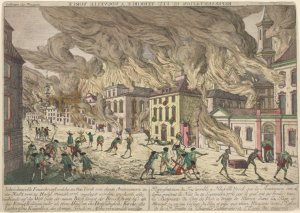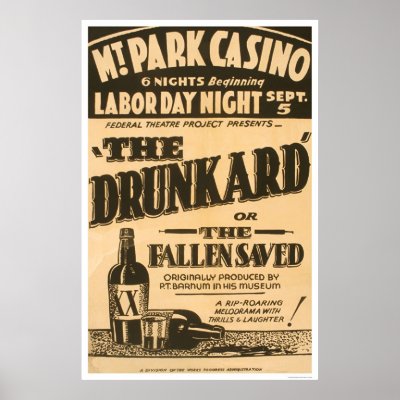Jun 16 2011
Posted by HuiLing Liang under June 16 Assignment
New York / Philadelphia
 According to Chudacoff, during the civil war, contrary to New York, Philadelphia, relative unity prevailed. Industries there met needs for war materiel, and workers adjusted to inflation and succeeded in getting some wage increases. Philadelphia residents responded relatively calmly to government quotas requiring that the city furnish a certain number of recruits for the Union army, and a strong police force deterred potential social upheaval. (81) Instead, in New York, there had riots which caused by unfair Draft Laws. The whites laborers were attacking black people and republicans and it lasted for four days and resulting in more than four hundred deaths. Most of all, it was a race riot. Through the image, we can see rioters subjected black men to the most brutal violence: torture, hanging, and burning.
According to Chudacoff, during the civil war, contrary to New York, Philadelphia, relative unity prevailed. Industries there met needs for war materiel, and workers adjusted to inflation and succeeded in getting some wage increases. Philadelphia residents responded relatively calmly to government quotas requiring that the city furnish a certain number of recruits for the Union army, and a strong police force deterred potential social upheaval. (81) Instead, in New York, there had riots which caused by unfair Draft Laws. The whites laborers were attacking black people and republicans and it lasted for four days and resulting in more than four hundred deaths. Most of all, it was a race riot. Through the image, we can see rioters subjected black men to the most brutal violence: torture, hanging, and burning.
Comments Off on New York / Philadelphia










 The Barnum’s American Museum was the popular attraction in 19th century New York City. P.T.Barnum purchased this museum from John Scudder in 1841. By 1850 he had greatly influence on the mid-19th century popular culture. The museum was burned down at the end of the Civil War. In this lost museum, you can find exotic animals from around the world, a number of “human curiosities” and many different wonders. Barnum used different kinds of innovative ways to dazzle the audiences. The museum displayed automata that imitated human and animal behavior and lantern slide shows, cosmoramas, and panoramas that presented images in new ways. The museum foreshadowed the commercial culture and pop culture in the United States. The museum is not only a place for entertainment, it also promoted the education on natural science in its animal exhibition, included historical context in its paintings and wax figures, and temperance reform and Shakespear dramas in its “Lecture Room”. Through adding educational value into its exhibitions, Barnum avoided to offend the religiously inclined. The Barnum’s American Museum was a single place where the people from different classes, immigrant, tourists, and residents, men and women could gather. It reflected the diversity of the American population at that time. However, in order to reinforce the white identities of museum patrons, african americans were only allowed in the museum on a limited basis. It was a key site for the antebellum articulation of whiteness. In addition, many of the exhibits in the museum reflected the emerging political and social crises that led to secession and Civil War.
The Barnum’s American Museum was the popular attraction in 19th century New York City. P.T.Barnum purchased this museum from John Scudder in 1841. By 1850 he had greatly influence on the mid-19th century popular culture. The museum was burned down at the end of the Civil War. In this lost museum, you can find exotic animals from around the world, a number of “human curiosities” and many different wonders. Barnum used different kinds of innovative ways to dazzle the audiences. The museum displayed automata that imitated human and animal behavior and lantern slide shows, cosmoramas, and panoramas that presented images in new ways. The museum foreshadowed the commercial culture and pop culture in the United States. The museum is not only a place for entertainment, it also promoted the education on natural science in its animal exhibition, included historical context in its paintings and wax figures, and temperance reform and Shakespear dramas in its “Lecture Room”. Through adding educational value into its exhibitions, Barnum avoided to offend the religiously inclined. The Barnum’s American Museum was a single place where the people from different classes, immigrant, tourists, and residents, men and women could gather. It reflected the diversity of the American population at that time. However, in order to reinforce the white identities of museum patrons, african americans were only allowed in the museum on a limited basis. It was a key site for the antebellum articulation of whiteness. In addition, many of the exhibits in the museum reflected the emerging political and social crises that led to secession and Civil War.
 The tour of The Lost Museum was a very informative experience. I didn’t really know what to expect when I entered, but as I progressed and explored all the three floors I came out with a decent sense of the history of New York City. It wasn’t really like the museums nowadays, but it had a very good feel of what a typical 19th century museum would be like.
The tour of The Lost Museum was a very informative experience. I didn’t really know what to expect when I entered, but as I progressed and explored all the three floors I came out with a decent sense of the history of New York City. It wasn’t really like the museums nowadays, but it had a very good feel of what a typical 19th century museum would be like. In addition to the presentation on the fires in NYC, I thought the portrayal of what entertainment was like in NYC in the past was very interesting too. Nowadays, entertainment means tv, movies, sports, etc. In the 1700 and 1800s, I learned that entertainment for them mainly were plays that acted out domestic dramas. Many people went and watched people perform live on stage for entertainment, for example “The Drunkard or the Fallen Saved.”
In addition to the presentation on the fires in NYC, I thought the portrayal of what entertainment was like in NYC in the past was very interesting too. Nowadays, entertainment means tv, movies, sports, etc. In the 1700 and 1800s, I learned that entertainment for them mainly were plays that acted out domestic dramas. Many people went and watched people perform live on stage for entertainment, for example “The Drunkard or the Fallen Saved.”






 The lost museum is a perfect place for knowing important information about the history of New York City in the 19th century. When I went inside the museum through website music was playing for a short time which was interesting. There are pictures which signify the history of New York City culture in that period. While exploring I found a poster which promoted museum as an educational place. Barnum promises an attraction that is “as amusing as it is instructive”. The Drunkard is one of the most perfect and real pictures of life ever placed before the public. The Drunkard was written in 1844 by William H. Smith. The Drunkard, or, The Fallen Saved is presented with the moral message of temperance. This poster gives step by step and in detail about drinking alcohol. The Drunkard drew large audiences and helped Barnum attract “respectable” middle class women to his museum in an era when theatre attendance had been the sole province of working-class men. At the end of the poster instructions are given that intoxicated drinks are not allowed inside the museum.
The lost museum is a perfect place for knowing important information about the history of New York City in the 19th century. When I went inside the museum through website music was playing for a short time which was interesting. There are pictures which signify the history of New York City culture in that period. While exploring I found a poster which promoted museum as an educational place. Barnum promises an attraction that is “as amusing as it is instructive”. The Drunkard is one of the most perfect and real pictures of life ever placed before the public. The Drunkard was written in 1844 by William H. Smith. The Drunkard, or, The Fallen Saved is presented with the moral message of temperance. This poster gives step by step and in detail about drinking alcohol. The Drunkard drew large audiences and helped Barnum attract “respectable” middle class women to his museum in an era when theatre attendance had been the sole province of working-class men. At the end of the poster instructions are given that intoxicated drinks are not allowed inside the museum.